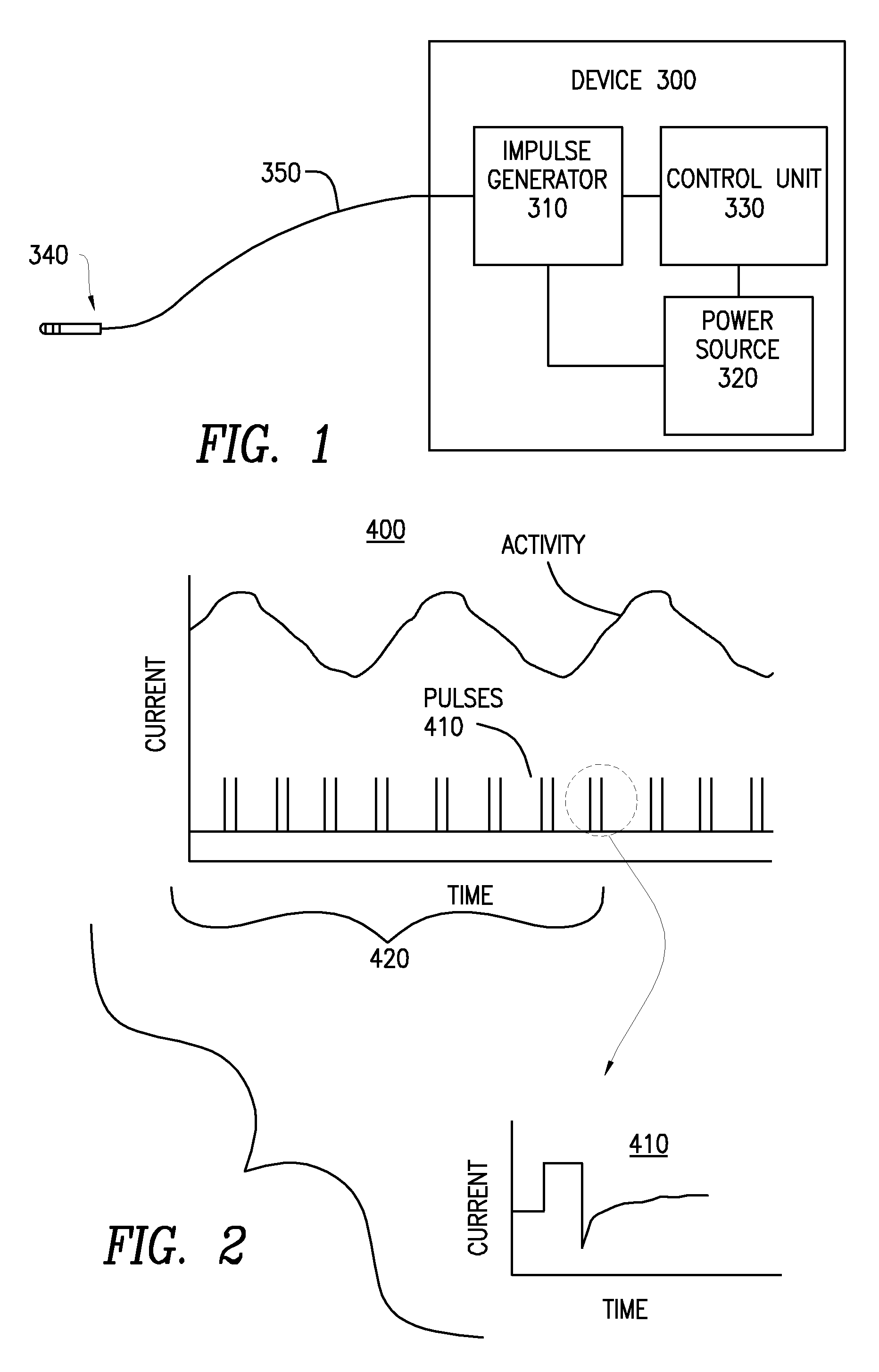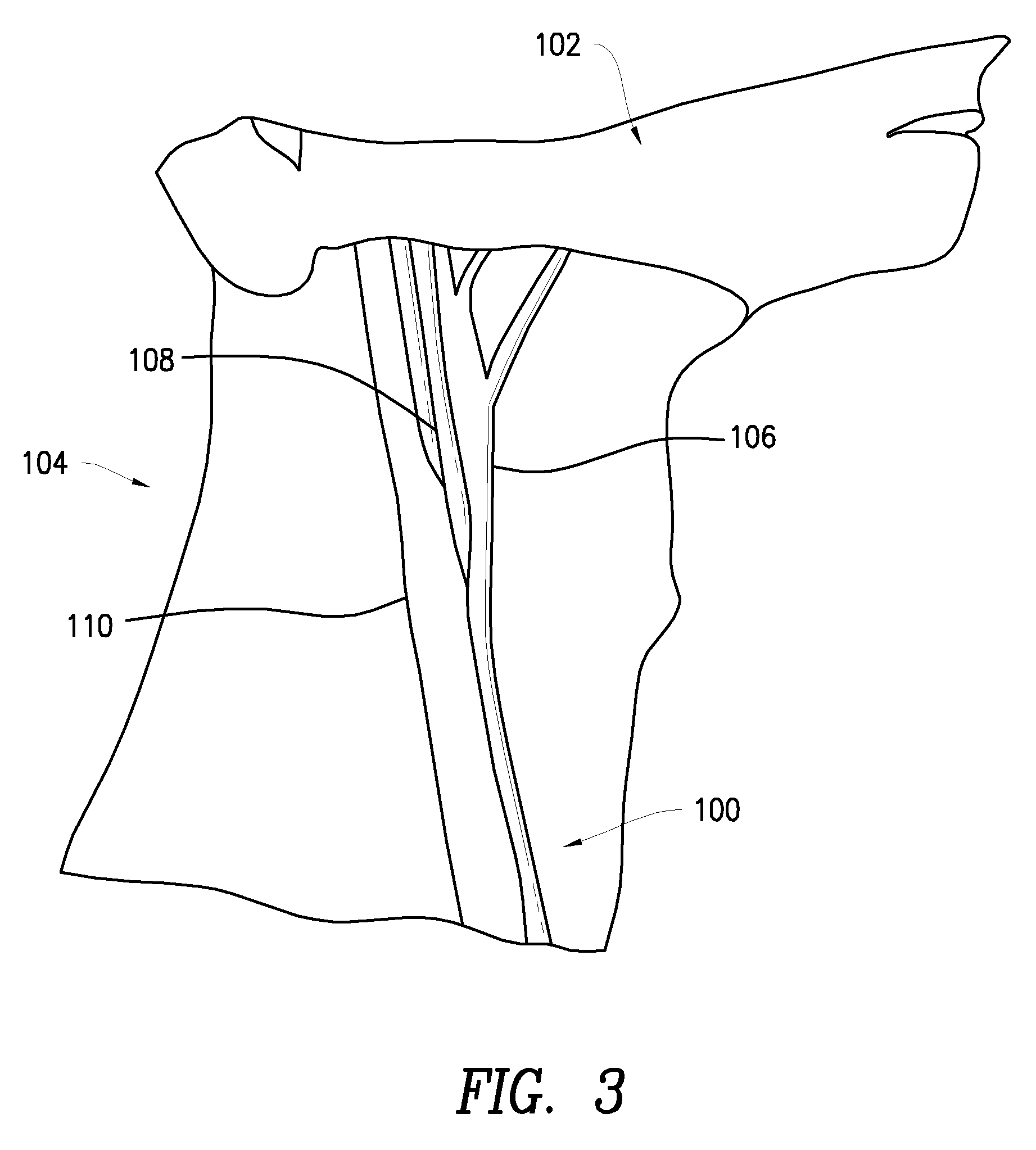Percutaneous Electrical Treatment Of Tissue
a percutaneous and tissue technology, applied in the direction of artificial respiration, physical therapy, therapy, etc., can solve the problems of inability to achieve the effect of reducing the risk of cardiac arrest and strok
- Summary
- Abstract
- Description
- Claims
- Application Information
AI Technical Summary
Benefits of technology
Problems solved by technology
Method used
Image
Examples
Embodiment Construction
[0050]In one or more embodiments of the present invention, electrical energy is applied through a percutaneous penetration in a patient to a target region around the carotid sheath to acutely treat a patient's ailment. The invention is particularly useful for applying electrical impulses that interact with the signals of one or more nerves, or muscles, to achieve a therapeutic result, such as relaxation of the smooth muscle of the bronchia, increase in blood pressure associated with orthostatic hypotension, reduction in blood pressure, treatment of epilepsy, treating ileus conditions, depression, anaphylaxis, obesity, and / or any other ailment affected by nerve transmissions, such as the vagus nerve or the spinal cord. In particular, embodiments of the present invention can be used to practice the treatments described in the following commonly assigned patent applications: US Patent Publication Numbers: 2009 / 0183237, 2008 / 0009913, 2007 / 0191902, 2007 / 0191905, 2007 / 0106339, 2007 / 010633...
PUM
 Login to View More
Login to View More Abstract
Description
Claims
Application Information
 Login to View More
Login to View More - R&D
- Intellectual Property
- Life Sciences
- Materials
- Tech Scout
- Unparalleled Data Quality
- Higher Quality Content
- 60% Fewer Hallucinations
Browse by: Latest US Patents, China's latest patents, Technical Efficacy Thesaurus, Application Domain, Technology Topic, Popular Technical Reports.
© 2025 PatSnap. All rights reserved.Legal|Privacy policy|Modern Slavery Act Transparency Statement|Sitemap|About US| Contact US: help@patsnap.com



